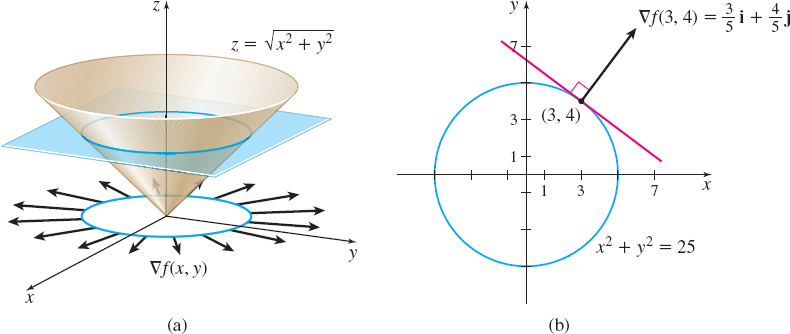EXAMPLE 6Using Properties of the Gradient
For the function f(x,y)=√x2+y2, graph the level curve containing the point (3,4) and graph the gradient ∇f(x,y) at this point.
Solution See Figure 8(a). The graph of the equation z=√x2+y2 is the upper half of a circular cone whose traces are circles. So, the level curves are concentric circles centered at (0,0). Because f(3,4)=√9+16=5, the level curve through (3,4) is the circle x2+y2=25. Since ∇f(x,y)=x√x2+y2i+y√x2+y2j
the gradient at (3,4) is ∇f(3,4)=35i+45j
This vector is orthogonal to the level curve x2+y2=25, as shown in Figure 8(b).
